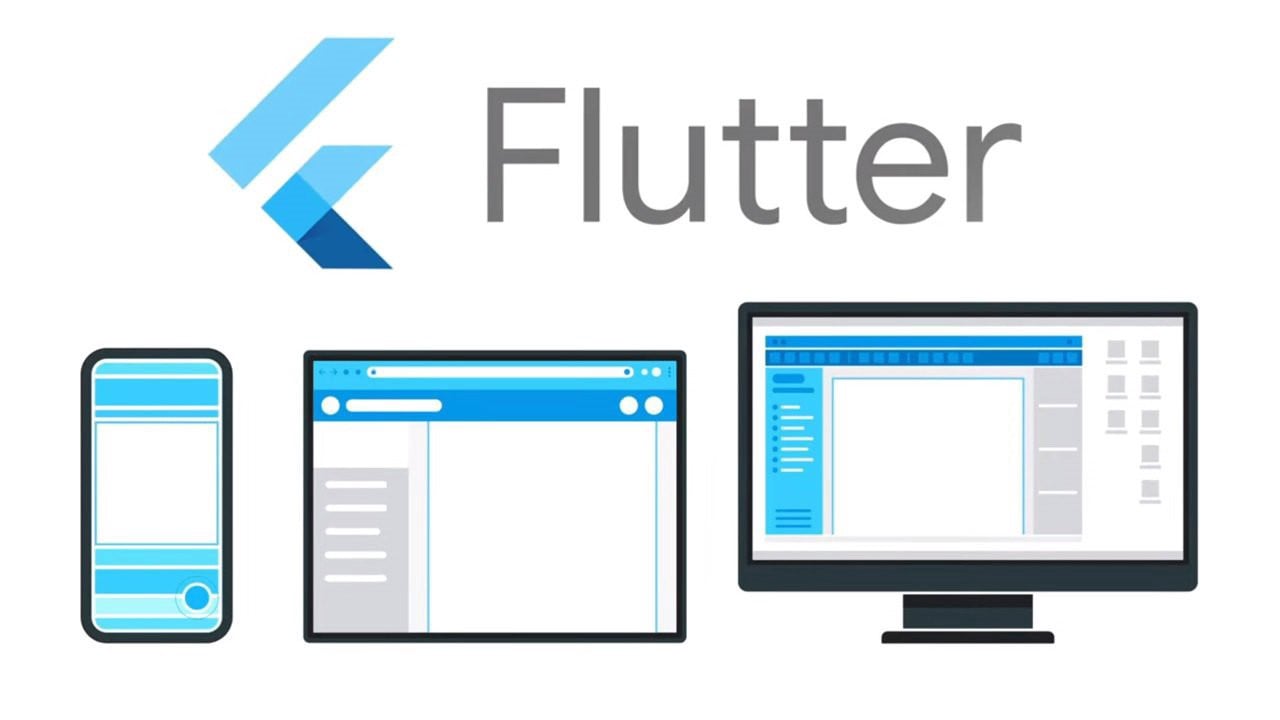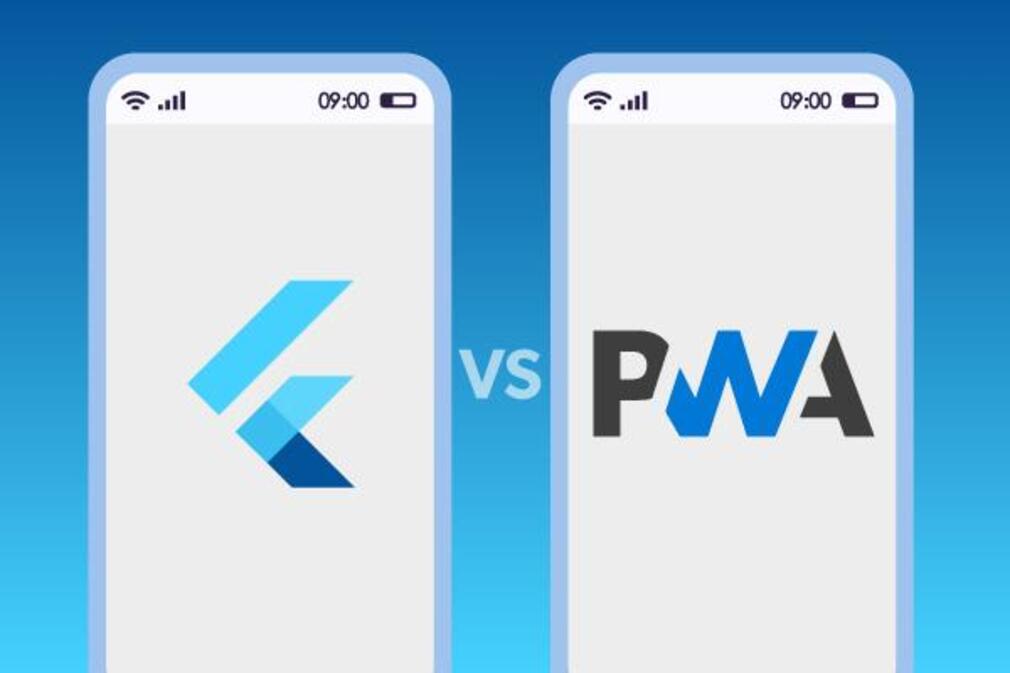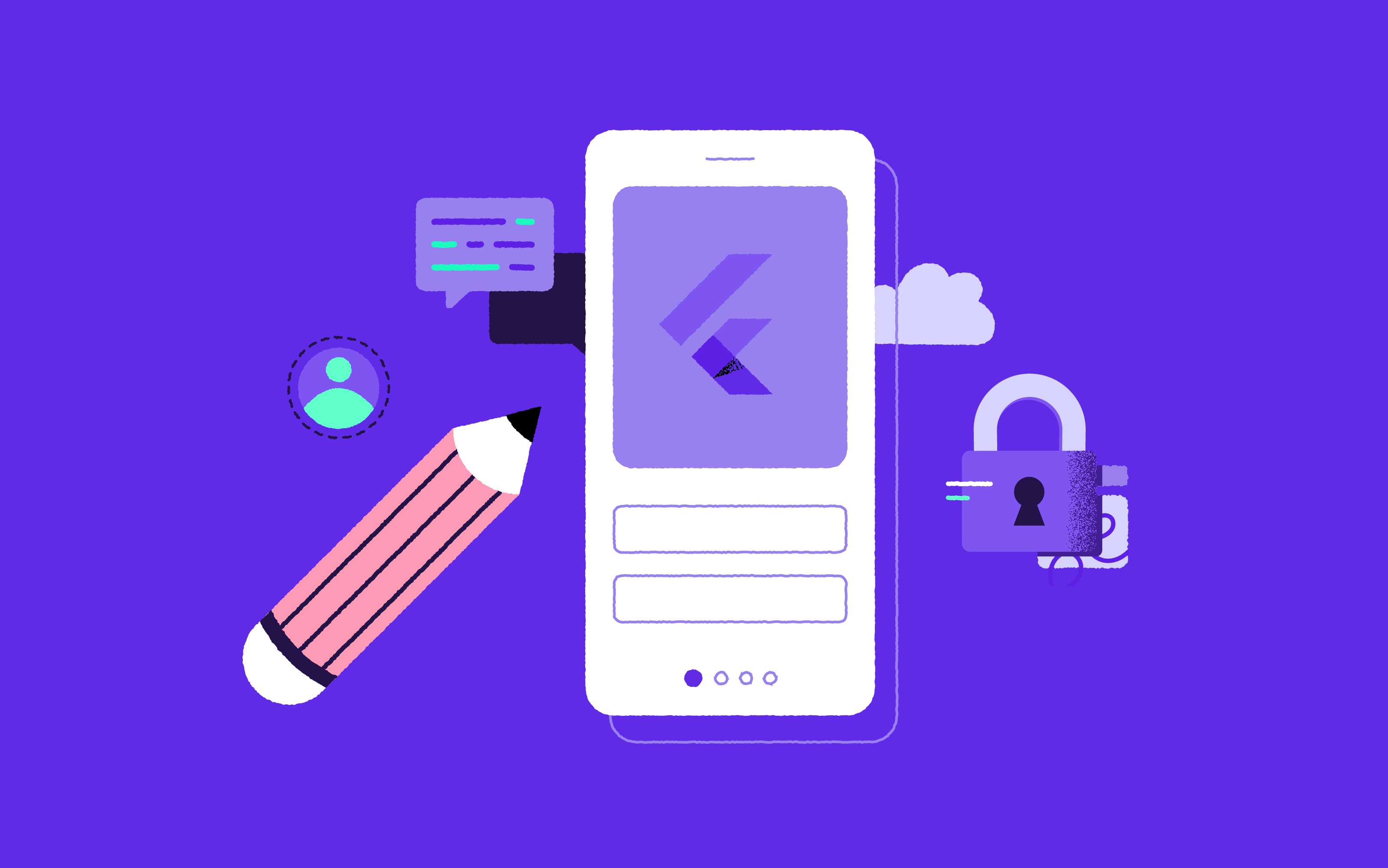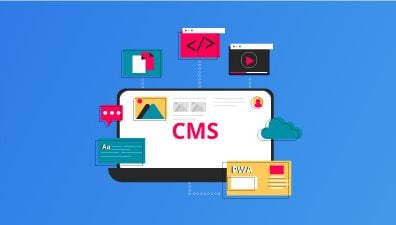In the rapidly evolving landscape of mobile app development, choosing the right technology stack is crucial to ensure the success and effectiveness of your project. Two prominent options that have gained considerable attention are Flutter and Progressive Web Apps (PWAs).
Both Flutter and PWAs have their unique strengths and advantages, making the decision of which one to choose a critical consideration. In this article, we compare Flutter vs PWA across various aspects, such as development experience, performance, access to native device features, platform support, app distribution, and more. By examining the key characteristics and trade-offs of each approach, you will gain a deeper understanding of their suitability for different project requirements. Whether you prioritize native-like performance, cross-platform compatibility, or cost-effective development, this article aims to provide insights that will help you make an informed decision between Flutter and PWAs for your next mobile app venture.
Table of Contents
Overview of Flutter
What is Flutter
Flutter is an open-source UI software development kit that has been developed by Google. It enables the creation of natively compiled applications for mobile, web, and desktop platforms from a single codebase. Flutter uses the Dart programming language, which is also developed by Google, and provides a rich set of pre-built UI components and widgets.

The key concept behind Flutter is to write once, run anywhere, meaning developers can write code once and deploy it across multiple platforms without the need for major modifications. Flutter’s architecture allows for efficient rendering and performance by directly rendering to the platform’s graphics engine, bypassing the traditional approach of using native controls.
Advantages of Flutter
Cross-platform Development Capabilities
With Flutter, you can write your app’s logic, user interface, and business logic in a single codebase using the Dart programming language. This codebase can then be compiled into native ARM code for iOS and Android, as well as JavaScript for the web, and machine code for desktop platforms like Windows, macOS, and Linux. This means that a substantial portion of your code can be shared across multiple platforms, eliminating the need to write separate code for each platform.
Hot Reload for Faster Development
Flutter’s Hot Reload feature is a game-changer when it comes to speeding up the development process and enhancing developer productivity. Hot Reload provides developers with immediate feedback on code changes, allowing them to see the impact of modifications in real time. This eliminates the need to wait for the app to rebuild and restart, saving valuable time and enabling developers to iterate rapidly. With Hot Reload, developers can experiment, fine-tune UI layouts, and make adjustments on the fly, resulting in a more efficient development workflow.
Rich Set of Pre-built UI Widgets
One of the notable advantages of using Flutter for app development is its extensive collection of pre-built UI widgets. These widgets serve as building blocks for constructing visually appealing and interactive user interfaces. Flutter’s UI widgets are ready-made components that can be easily customized and integrated into your app’s interface. They provide a solid foundation for building common UI elements such as buttons, text fields, lists, navigation drawers, and more. Leveraging these pre-built widgets significantly reduces development time as you don’t have to start from scratch or create custom UI components for basic functionalities.

Moreover, Flutter’s UI widgets follow the Material Design guidelines for Android and the Cupertino style for iOS, ensuring a consistent and native-like user experience on both platforms. By adhering to platform-specific design principles, Flutter widgets help maintain familiarity for users and create a cohesive app experience across different devices.
High Performance
Flutter is renowned for its exceptional performance and ability to deliver smooth animations, contributing to a superior user experience. Flutter apps are compiled into native code, allowing them to directly access the device’s GPU (Graphics Processing Unit) and render graphics at a high-performance level. By bypassing the bridge between the app and the platform, Flutter achieves near-native performance, resulting in smooth and responsive user interfaces.
Moreover, Flutter utilizes Skia, a powerful 2D graphics library, as its rendering engine. Skia ensures fast and efficient rendering of UI components, animations, and visual effects. It leverages hardware acceleration and optimizes rendering pipelines, enabling Flutter apps to deliver high frame rates and fluid animations.
Access to Native Device Features
One of the significant advantages of Flutter is its ability to access native device features and leverage the full capabilities of the underlying platforms. Flutter provides a comprehensive set of platform-specific APIs and plugins that allow developers to access native device features. These APIs and plugins cover a wide range of functionalities, including camera, geolocation, sensors, storage, connectivity, and more. By utilizing these APIs and plugins, Flutter apps can seamlessly integrate with the device’s hardware and software capabilities.
Community Support and Active Development
Flutter has a large and passionate community of developers worldwide. This community actively contributes to the growth, improvement, and adoption of Flutter. It provides a platform for knowledge sharing, collaboration, and support through forums, online communities, meetups, and conferences. Engaging with this community allows developers to learn from experienced Flutter practitioners, get help with challenges, and stay updated on the latest trends and best practices.
Furthermore, Flutter benefits from Google’s commitment to its development and continuous improvement. Google actively invests in Flutter’s ecosystem, contributing new features, fixing bugs, and enhancing its performance. This ensures that Flutter remains a cutting-edge framework with regular updates and advancements. The active development ecosystem translates into a robust and future-proof technology stack for building apps.
Overview of PWA
What is PWA
PWAs are web applications that mimic the appearance and functionality of traditional or native mobile apps, despite being regular web pages or websites. These applications leverage the capabilities of modern browsers and aim to provide users with a mobile-like experience.

The popularity of PWAs continues to rise due to their ability to simplify cross-platform app development compared to native apps. They are designed to work seamlessly for all users and can adapt to various device types and sizes, ensuring a responsive user experience. PWAs deliver an app-like feel without the need for complex installations typically associated with app stores.
Moreover, PWAs prioritize security by utilizing HTTPS security certificates, which ensure secure connections between the app and the user’s device. Additionally, these apps are discoverable by search engines, enhancing their accessibility and visibility to users.
Advantages of PWA
Accessibility
PWAs offer several advantages when it comes to platform independence and accessibility. PWAs are designed to work across different platforms and devices, including desktops, tablets, and mobile devices. Regardless of the operating system or browser, PWAs provide a consistent user experience. This platform independence eliminates the need for separate app development for each platform, reducing development time, effort, and cost.
Moreover, PWAs are built using web technologies such as HTML, CSS, and JavaScript. This allows developers to maintain a single codebase that can be deployed across multiple platforms. Instead of developing and maintaining separate codebases for each platform (Android, iOS), developers can focus on building and updating a single version of the PWA. This significantly streamlines the development process and simplifies ongoing maintenance.
No Need for App Store Submissions
PWAs can be deployed directly on the web without the need to go through the app store approval process. Once the PWA is built, it can be made accessible to users through a web URL or shared via links. This eliminates the time-consuming and often restrictive app store review process, allowing for faster deployment and updates.
With PWAs, users can easily access the app by simply visiting the app’s URL. There is no need to search for and download the app from an app store. This frictionless distribution model enhances user accessibility and reduces the steps required to access and use the app. Users can bookmark the app’s URL for quick and convenient future access.
Lower Development and Maintenance Costs
As PWAs are designed to work on various platforms and devices, they eliminate the need to develop and maintain platform-specific code. By leveraging web technologies and responsive design principles, PWAs automatically adapt to different screen sizes, orientations, and operating systems. This compatibility across platforms reduces the complexity and cost associated with developing and maintaining separate apps for each platform.
Seamless Updates
PWAs offer instant updates to users without requiring them to manually download and install new versions. Whenever a user accesses a PWA, it automatically checks for updates and fetches the latest version from the server. This ensures that users always have access to the most up-to-date version of the app, including bug fixes, feature enhancements, and content updates.

Moreover, PWAs enable developers to have better control over app versions. By managing the PWA’s codebase and content on a central server, developers can easily update and roll back to previous versions if needed. This centralized control simplifies version management and allows for efficient release management, ensuring that users receive consistent and reliable app updates.
Improved Discoverability
PWAs are built using web technologies, making them easily discoverable by search engines. Search engine crawlers can index the content and URLs of PWAs, enabling them to appear in search engine results pages (SERPs) when users search for relevant keywords or topics. This increased visibility enhances the app’s discoverability among a wide range of users.
Additionally, PWAs can be easily shared via direct links. When users come across a PWA in search results or through shared links, they can access the app directly without the need for installation from an app store. This direct link-sharing capability simplifies user acquisition and allows users to access the app instantly, driving organic traffic to the PWA.
Responsive Design for Multiple Devices
PWAs are built using responsive design principles, ensuring that the app’s user interface adapts seamlessly to different screen sizes and orientations. Regardless of the device being used, whether it’s a desktop, tablet, or mobile device, PWAs provide a consistent and optimized user experience. This consistency enhances user satisfaction and usability, regardless of the device or platform.
Flutter vs PWA Comparison
Development Experience and Learning Curve
When comparing Flutter vs PWA in terms of development experience and learning curve, there are some notable differences. Let’s explore each approach:
- Complexity: Flutter offers a comprehensive and self-contained development framework, providing a more structured approach to building cross-platform apps. PWAs, on the other hand, leverage existing web technologies, which can be more flexible but also require understanding various web standards and best practices.
- Tooling and Ecosystem: Flutter has a growing ecosystem with a wide range of packages, tools, and libraries specifically designed for Flutter development. PWAs benefit from the vast web development ecosystem, including frameworks like React and Angular, with a plethora of resources and third-party integrations available.
- Development Speed: Flutter’s hot reload feature allows for rapid iteration and faster development cycles. PWAs, being web-based, also offer fast development and deployment processes, with the ability to instantly update the app on the server. However, PWAs may require additional testing across different browsers and platforms.
- Learning Resources and Community: Both Flutter and PWAs have active and supportive communities, providing resources, tutorials, and online forums for developers. However, Flutter’s community has seen significant growth and investment, resulting in a wealth of resources and a strong support network.

Flutter offers a comprehensive development experience with a reactive framework, hot reload, and a single codebase for cross-platform development. PWAs leverage existing web technologies and provide a familiar development experience for web developers. The learning curve for Flutter involves adapting to the Dart language and Flutter’s reactive architecture, while PWAs require proficiency in web technologies and responsive design principles. Both approaches have active communities and resources available, but Flutter’s community has experienced substantial growth and investment.
Flutter vs PWA: User Experience
Considering user experience differences between PWA vs Flutter, PWAs can offer a good user experience and offline functionality, but they may not achieve the same level of visual fidelity and performance optimization as Flutter apps.
- Native Look and Feel: Flutter provides a highly customizable UI that closely resembles the native platform’s look and feel. This results in a consistent and familiar user experience across different devices and platforms. PWAs, while adaptive through responsive design, may not have the same level of platform-specific visual consistency as Flutter.
- Animation and Interactivity: Flutter’s custom rendering engine and reactive framework offer smooth animations and interactivity. The framework allows developers to create intricate and complex animations with ease. PWAs can also incorporate animations using web technologies like CSS and JavaScript, but Flutter’s rendering engine and widget-based approach provide more granular control and performance optimization.
- Access to Device Features: Flutter offers seamless access to native device features and APIs through its platform-specific plugins. This enables developers to leverage the full capabilities of the underlying platforms, enhancing the user experience. PWAs, while providing access to some device features through web APIs, may have limitations in accessing certain platform-specific functionalities.
- Offline Functionality: PWAs can provide offline functionality through service workers, allowing users to access the app even without an internet connection. This improves the user experience by ensuring uninterrupted app usage. Flutter apps can also cache data and provide offline capabilities, giving a similar advantage in user experience.
In short, Flutter offers a native-like user experience with its custom rendering engine, pre-built UI widgets, and access to native device features. It excels in providing visually appealing interfaces, smooth animations, and high-performance apps. PWAs, on the other hand, leverage responsive design principles for a consistent experience across devices and benefit from improvements in browser performance.
Performance Benchmarks and Responsiveness
When comparing Flutter vs PWA performance, there are several factors to consider:
- Native Performance: Flutter, being compiled into native code, generally offers superior performance compared to PWAs. The direct access to device capabilities and optimization at the native level enables Flutter apps to achieve smooth animations, responsive UIs, and faster execution.
- Responsiveness: Both Flutter and PWAs can provide responsive user experiences. Flutter’s reactive framework and custom rendering engine contribute to highly responsive interfaces. PWAs, with their responsive design and network optimizations, can also deliver a responsive experience, adapting to different devices and network conditions.
- Hot Reload vs. Browser Refresh: Flutter’s hot reload feature allows for instant updates and quick iterations during development. Changes can be seen immediately, speeding up the development process. In contrast, PWAs require a browser refresh to reflect changes made to the code, which can introduce a slight delay during development.
- Platform Limitations: PWAs, being executed within web browsers, may face certain limitations imposed by the browser or platform. These limitations can impact performance, especially when it comes to accessing certain device-specific features or leveraging low-level optimizations.

Flutter typically offers superior performance due to its compilation of native code and direct access to device capabilities. Flutter apps can achieve near-native performance and responsiveness. PWAs, leveraging modern web technologies and optimizations, can provide responsive experiences and benefit from browser improvements. While PWAs may not match the performance of Flutter apps in certain scenarios, they offer cross-platform compatibility and the ability to leverage the existing web ecosystem.
Platform Support and App Distribution
When it comes to platform support and distribution of Flutter vs Progressive Web App, each platform has its own strengths and weaknesses:
- App Store Presence: Flutter apps have a strong presence in app stores, which serve as popular platforms for app discovery and distribution. This can provide developers with a built-in user base and access to app store features such as user reviews, ratings, and monetization options. PWAs, on the other hand, are not distributed through app stores but are accessible directly on the web.
- Platform Independence: PWAs offer platform independence, as they can run on any device with a compatible web browser. This enables broader reach and eliminates the need to develop and maintain separate apps for each platform. Flutter, while supporting multiple platforms, still requires platform-specific development for some features and may involve additional effort to ensure platform-specific optimizations.
- Updates and Deployment: Flutter apps distributed through app stores typically require app store review and approval for updates. This process can introduce delays in releasing new features or bug fixes. PWAs, being web-based, can be updated and deployed instantly on the server, allowing for faster updates without the need for app store submissions.
- Installation and Discoverability: Flutter apps require users to download and install the app from app stores, which can involve additional steps and storage requirements. PWAs, on the other hand, can be easily accessed through a web URL, bookmarked, or discovered through search engines. This web-based distribution simplifies access and reduces the friction of installation.
While Flutter offers extensive platform support and a native-like experience on each platform and is typically distributed through app stores, with the ability for sideloading, PWAs are platform-agnostic and accessible on any device with a web browser. They are distributed directly on the web, providing a seamless installation-free experience.
Access to Native Device Features
Another feature of difference between Flutter vs PWA is accessing native device features.
- Native Integration: Flutter offers more direct and comprehensive access to native device features through platform-specific plugins. This enables developers to leverage the full capabilities of the underlying platforms, resulting in a deeper integration with the native environment.
- Limitations of Web APIs: PWAs, relying on web APIs, may have limitations when it comes to accessing certain native device features. While web APIs provide access to a range of functionalities, they may not offer the same level of fine-grained control or access to all platform-specific features.
- Platform-Specific Optimization: Flutter’s platform-specific code allows for fine-tuning and optimization of app performance on each platform. PWAs, being platform-agnostic, may not achieve the same level of performance optimization due to the inherent limitations of web technologies and browser implementations.
- Cross-Platform Consistency: Flutter’s native device access ensures a consistent user experience across platforms, as developers can leverage platform-specific APIs and design guidelines. PWAs, while offering cross-platform compatibility, may have variations in the user experience due to the differences in browser implementations and available web APIs across devices.

Flutter provides extensive access to native device features through platform-specific plugins, allowing for deep integration and control over device functionalities. PWAs, on the other hand, rely on web APIs to access device features, which may have limitations compared to native apps. While PWAs offer cross-platform compatibility, their access to native device features is constrained by the capabilities provided by web APIs and browser implementations.
Development & Maintenance Costs
When comparing Flutter vs PWAs in terms of development and maintenance costs, several factors come into play:
- Development Efficiency: Flutter’s single codebase approach and its rich set of pre-built UI widgets can accelerate development, as developers can focus on building features rather than platform-specific code. PWAs, leveraging web technologies, also benefit from a single codebase and the familiarity of web development tools, enhancing development efficiency.
- Maintenance Consistency: Both Flutter and PWAs provide consistency in maintenance processes due to their single codebase approach. Updates, bug fixes, and feature enhancements can be applied consistently across devices and platforms, reducing maintenance complexities and costs.
- Testing Effort: PWAs may require additional testing across various browsers and platforms to ensure compatibility and responsiveness. Flutter, being a more controlled environment, may require less testing effort in terms of platform compatibility.
Flutter vs PWA offers cost advantages through single codebases, reducing the need for platform-specific development and maintenance. Flutter’s rich set of pre-built UI widgets and its unified update process can enhance development and maintenance efficiency. PWAs leverage existing web development skills and benefit from responsive design, resulting in cost savings.
What to Choose: Flutter vs PWA
Flutter vs PWA is a distinct option for mobile device accessibility. While they may appear as separate choices, they can be seen as partial substitutes for each other. Both Flutter and PWAs are currently growing in popularity, and it remains uncertain if one will eventually replace the other. Regardless, they cater to different needs and will continue to serve their respective purposes.
PWA
Choose PWA if:
- You have an existing website or web app platform and desire to enhance the user experience and extend its availability to mobile devices.
- Your mobile app usage is occasional, and users prefer not to install it to conserve storage space on their devices.
- You seek a cost-effective solution for your business. By developing a PWA, you can create a single app that can be accessed on any device with an internet connection and a browser.
Flutter
Choose Flutter if:
- You require a high-performance mobile app that functions smoothly on both Android and iOS platforms.
- You need a mobile app that can utilize specific hardware features of devices, which may not be accessible to PWAs.
- Your target audience predominantly uses iOS devices, and you prioritize ensuring excellent compatibility and performance on this platform.
- The design aspect of your mobile app is crucial, and you seek to create visually appealing and customized user interfaces.
In conclusion
When considering the choice between Flutter vs PWA, it becomes evident that both options have their unique strengths and advantages. Flutter, with its cross-platform capabilities, single codebase, and access to native device features, offers a native-like user experience, high performance, and efficient development processes. It is well-suited for building fast-performing mobile apps with excellent compatibility across Android and iOS platforms. Flutter also provides extensive customization options for designing visually appealing interfaces.
On the other hand, PWAs leverage web technologies, responsive design principles, and web APIs to create platform-independent applications that can run on any device with a web browser. They offer cost-effective development, easy distribution without app store submissions, and improved discoverability through search engines. PWAs are particularly beneficial when enhancing an existing website or web app to provide a mobile experience, especially for intermittent usage scenarios where users prefer not to install dedicated apps.
Ultimately, the choice between PWA vs Flutter depends on specific project requirements, such as performance needs, access to native device features, target audience, and design considerations. Flutter excels in creating highly performant and visually appealing apps, while PWAs provide platform independence, cost-effectiveness, and easy web-based distribution.
If you are still uncertain about whether to choose Flutter or PWA for your project, please reach out to us for a detailed consultation. Our team provides comprehensive guidance tailored to your specific needs and helps you make an informed decision.











